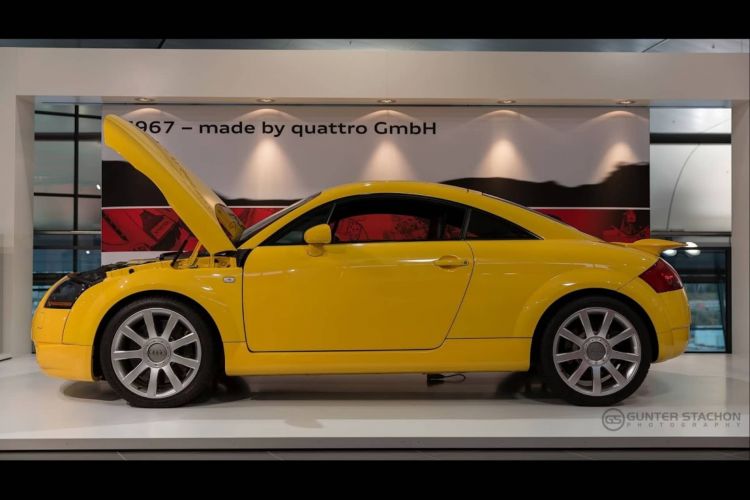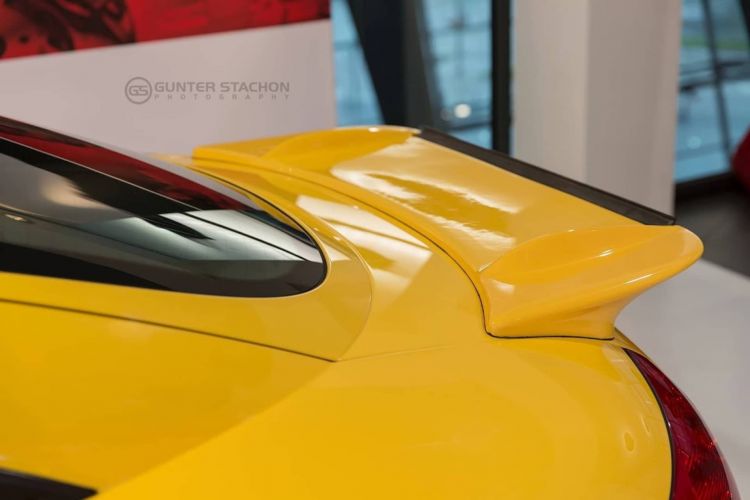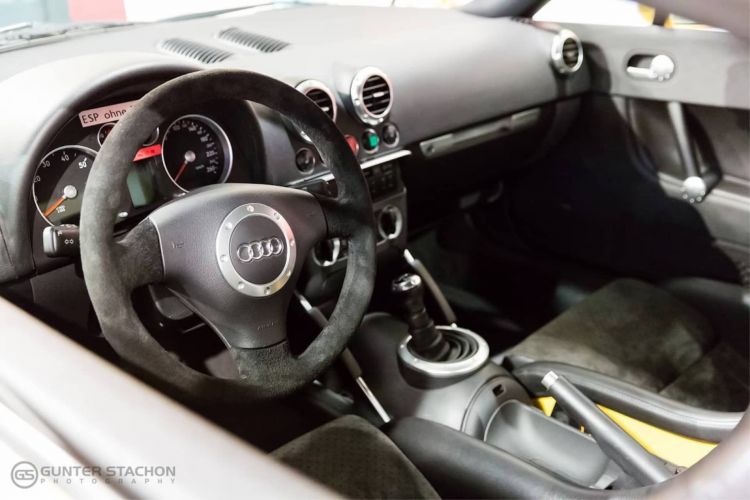In the late nineties, Audi dreamed big. After launching the most powerful model of the brand to date, the Audi RS4 with 380 hp, in Ingolstadt they fantasized about a new sports car: at that time, the Audi R8 was still a long way off, so they focused the spotlight on the Audi TT. From the combination of the former with the latter, the Audi TT 2.7 V6: the car with which they put fear into the body of the Porsche 911.
It was the year 2001 and the supple formed by Quattro Gmbh and Cosworth began to explore what options they had to take the Audi TT to the next level: the top of the range of the compact sports car was, at that time, a 1.8-liter four-cylinder turbo engine that delivered 225 hp; 240 hp if it was the Quattro Sport. Powerful, but not enough to scare off the competition.
How to adapt an Audi TT to an RS4 Avant?
They also didn’t have a technically up-to-date five-cylinder. The engineers thought, then, that the Audi RS4 Avant B5’s 2.7-litre twin-turbocharged V6 was the perfect candidate to turn the Audi TT into a true sports car capable of scaring the very Porsche 911.
The theory was good, the practice was something else: the Audi TT forced that block to occupy a transverse position… and it didn’t fit. They looked for a solution and found it: instead of adapting the V6 to the TT, the TT was adapted to the chassis of the Audi RS4 Avant. They therefore used the entire platform of the sport family version: from the engine to the transmission, passing through the wheels (we are talking about 255-millimeter wide tires, 35 and 18-inch profile), the axles, the rear differential or the braking system (with 360-millimeter front discs and caliper double piston and 312-millimeter rear discs and single-piston caliper).
eight months of construction
Now it only remained to place all these elements under the bodywork of the first generation Audi TT, which, indeed, was much more compact than the Audi RS4 Avant. To get the puzzle to fit, they had to shorten the platform by 17 centimeters and, despite this, the only visual difference between a conventional unit and that one was found in the rear: the rear spoiler was a little larger. The interior, for its part, was not modified excessively either: it only received an Alcantara-wrapped steering wheel and Recaro seats.
However, the V6 sound could not be hidden. The Audi TT 2.7 V6 produced 375 hp and had a torque of 440 Nm from 2,500 rpm: his dance partner was a six-speed manual gearbox associated with an all-wheel drive system. With a weight of 1,580 kilos, it is not surprising that that version of the German compact sports car went from 0 to 100 km/h in 4.8 seconds and reached a top speed of 295 km/h. With these numbers they could scare the competition.
They took eight months to shape the Audi TT 2.7 V6 and tested it for 20,000 kilometers. It was then that they parked this prototype in the garage of Quattro GmbH with no chance of reaching production. The reason? The construction of it was too complex and was not profitable.
The relay of the Audi TT 2.7 V6
The Audi TT 2.7 V6 was a dream that briefly came true, but later the German compact sports car would receive a 3.2-litre six-cylinder that could fit into its platform without major changes. Of course, it only reached 250 hp at 6,300 rpm and had 320 Nm at 2,500-3,000 rpm. The only one that reached values similar to those of the Audi TT 2.7 V6 was the Audi TT RS Plus, which was powered by a 2.5-litre turbocharged five-cylinder that had 360bhp and 465Nm. However, it did not shake the chassis of the Porsche 911.
Images: Gunter Stachon Photography







